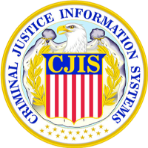Securing the big hole at the center of a DVD:
Across the US, child advocacy centers are focused on providing a continuum of services to children who have suffered from incidents of child abuse and neglect. To effectively provide services without retraumatization, child forensic interviews are video recorded so they can be shared with law enforcement, prosecution, child welfare agencies, health professionals and when necessary, defense attorneys – without forcing the child to have to retell the story of their trauma unnecessarily.
So, why do DVDs have holes?
Some say it is to make them easier to handle. But it’s the hands on them that are the big problem.
In the child advocacy industry, DVDs are a standard means for sharing recorded forensic interviews. A video of a child disclosing abuse is highly sensitive evidence, covered in some states by the same legal protections as child sexual abuse material (also sometimes still referred to as child pornography). Given these are the most vulnerable truths these children can offer, the security of these interviews should meet the highest privacy standards. Here is where DVDs start to have real holes – ones that we cannot see and may not fully consider.
How DVDs fail in child protection:
While states may have penalties for making and distributing unauthorized copies of child forensic interviews, the illegal duplication of DVDs is an unfortunate reality. In one known case in the midwest, copies were distributed to defendants’ family members hoping to source ways to discredit the child on the stand. In another case, a defendant got a hold of a DVD copy and threatened to play the video at a family gathering. DVDs have been known to circulate amongst unauthorized parties trying to pressure the child to recant their testimony. Each of these cases illustrates the holes that DVDS have in the privacy and right to justice that these children deserve.
For every child forensic interview, up to a dozen different copies are made and 60 different actions are taken by various members of multidisciplinary teams. Manually replicating and sharing DVD copies creates many opportunities where humans unintentionally expose this information. In fact, human accidental error introduces and accounts for some of the greatest holes in the system. Limited resources, high case volumes, and the long duration between when these interviews are recorded and when they go to trial are all reasons why unintentional DVD mishandling occurs. In each case, a lost DVD risks a child’s interview getting into the wrong hands or justice not being served.
The time consumed in the manual process of replication and distribution exposes additional holes in DVDs as a means to advance important child protection. Following an interview, a DVD must be physically delivered to partners in law enforcement and other agencies that might need to take action. Delays can be leveraged by a perpetrator to reoffend, tamper with witnesses, or in some cases, even leave the country to avoid arrest. As cases await trial over months or years, time is a hole in a DVD as the hardware is prone to damage and degradation.
Improper tracking of video copies and access to those copies can create a hole in a case because rules of evidence require prosecutors to prove the authenticity of a video. The number of DVD copies needed for any given case and the ability for DVDs to be replicated can make this chain of custody tracking difficult and often incomplete. Any misstep in documentation can be used by a defense attorney to have the evidence declared inadmissible.
A better way to manage child forensic videos:
Guardify was born to fill the holes in the secure, remote collaboration around this critical digital evidence while saving precious time and resources.
Today, child forensic interviews can be securely uploaded into the cloud and immediately shared with critical partners – saving centers up to 65% of time wasted in the old process. Videos in Guardify are protected by thirteen layers of security and are identifiable as the original, authentic evidence to prevent unauthorized copies. When viewing this evidence is needed for justice and healing, multidisciplinary partners with authorized credentials can immediately access a single instance of the video in the cloud. This limits unnecessary, accidental, or inappropriate activity and preserves the integrity of the evidence to provide for greater justice for these children.
The big hole in the center of a DVD is necessary to make it spin so that the laser can read the 7.5-mile spiral track of code. But, what about a DVD’s hidden holes?
At the center of Guardify, our mission is to protect children by securing their video evidence. You can help fill in the holes at the center of DVDs by pushing to eliminate them in child abuse cases.



